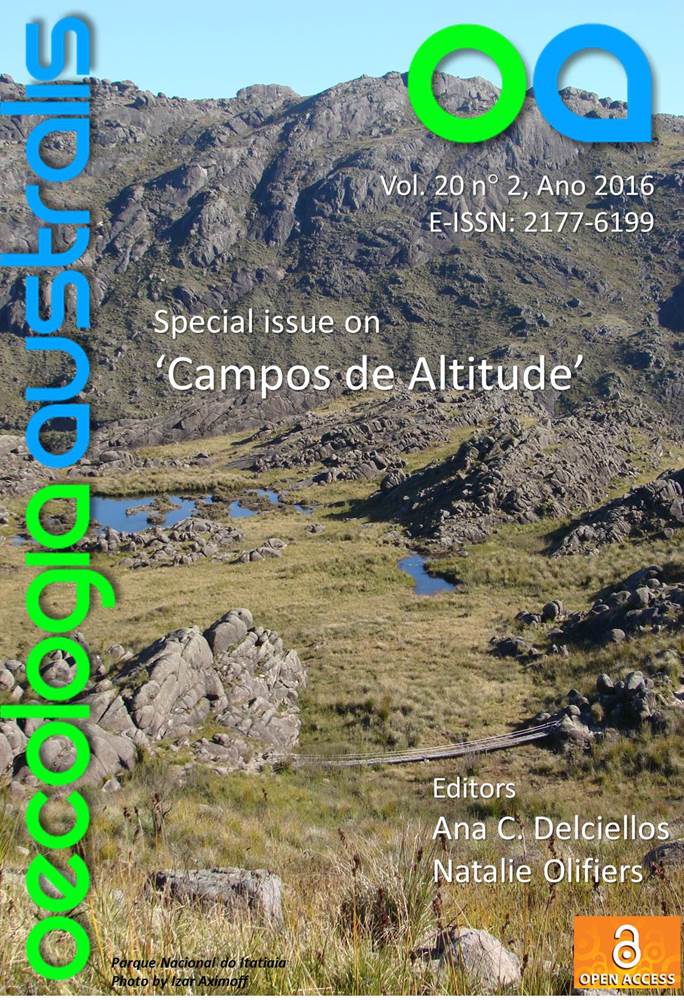EFFECTS OF FIRE ON POPULATION DYNAMICS OF AN ENDEMIC HIGH ALTITUDE RUPICOLOUS GEOPHYTE
DOI:
https://doi.org/10.4257/oeco.2016.2002.11Keywords:
Demography, Itatiaia National Park, Nurse plant, Rocky outcrop, Stevia camporumAbstract
Stevia camporum (Asteraceae) is a threatened and endemic geophyte of the rocky outcrop vegetation in the high altitude grasslands on the top of the Itatiaia massif. This is a locally abundant plant, which establishes itself preferentially on vegetation mats dominated by pioneer species such as mosses (Campylopus pilifer) and by the vascular endemic plants Fernseea itatiaiae and Barbacenia gounelleana. With a very distinctive morphology, these nurse plants may differently influence the dynamics of S. camporum. These relations were previously studied for two years when a 3-day unnatural fire burned the grassy vegetation around the rocky outcrops, thereby affecting indirectly the vegetation mats (islands) growing at the exposed rocky surfaces, through ash emissions and changes on the availability of nutrients. We described pre-fire (1999-2001) and post-fire (2002-2003) population demography and growth of S. camporum under the hypothesis that Stevia demography would change due to effects of fire, such as nutrient income and, further, that responses would vary according to the dominant pioneer species of each vegetation mat. Forty-three islands containing S. camporum (total area of 30.08m2) were monitored. Despite considerable variation in rainfall between years, population structure and dynamics of S. camporum were very similar in the two pre-fire growing seasons. A massive increase in the frequency of branches in the first size class followed fire, but with nearly no changes in the other classes with a thinning process being observed. The height, number of nodes and number of fruits of Stevia camporum's ramets showed significant differences when comparing the values for periods before and after the fire. Stevia's demography on Fernseea (Bromeliaceae) mats was significantly different in relation to the other mat species, after fire. In Itatiaia, indirect effects of smoke produced by fire episodes seem to trigger rapid responses on rupicolous communities followed by rapid return to previous conditions, particularly in secondary species. Prolonged effects on more often disturbed communities remain to be seen, and might be relevant to community structure of high altitude outcrop vegetation.Downloads
Download data is not yet available.
Downloads
Additional Files
- camiladebarros, CARTA EM RESPOSTA.docx (Português (Brasil))
- camiladebarros, Figura 2.tif (Português (Brasil))
- camiladebarros, Figura 3.tif (Português (Brasil))
- camiladebarros, Figura 4.tif (Português (Brasil))
- camiladebarros, Figura 5.tif (Português (Brasil))
- camiladebarros, Figura 6.tif (Português (Brasil))
- camiladebarros, Figura 7.tif (Português (Brasil))
Published
2017-02-23
Issue
Section
Articles


